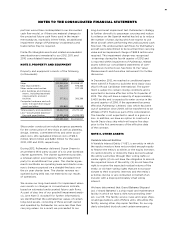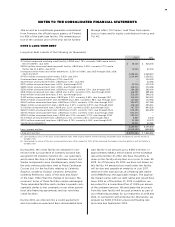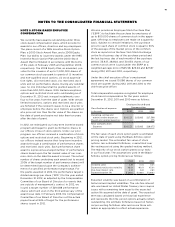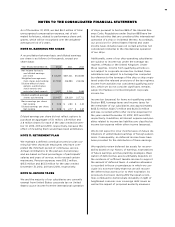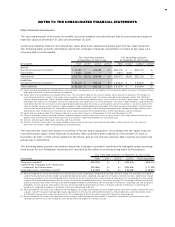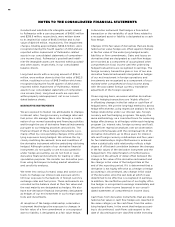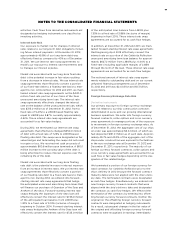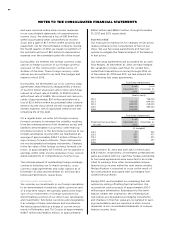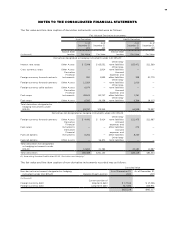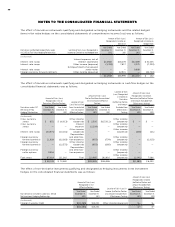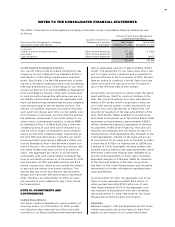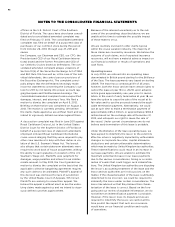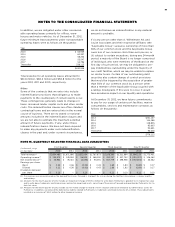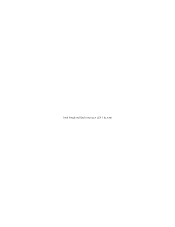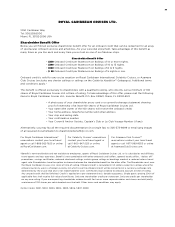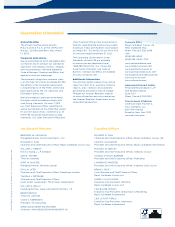Royal Caribbean Cruise Lines 2012 Annual Report Download - page 91
Download and view the complete annual report
Please find page 91 of the 2012 Royal Caribbean Cruise Lines annual report below. You can navigate through the pages in the report by either clicking on the pages listed below, or by using the keyword search tool below to find specific information within the annual report.
87
NOTES TO THE CONSOLIDATED FINANCIAL STATEMENTS
activities. Cash flows from derivative instruments not
designated as hedging instruments are classified as
investing activities.
Interest Rate Risk
Our exposure to market risk for changes in interest
rates relates to our long-term debt obligations includ-
ing future interest payments. At December 31, 2012,
approximately 45.8% of our long-term debt was
effectively fixed as compared to 40% as of December
31, 2011. We use interest rate swap agreements to
modify our exposure to interest rate movements and
to manage our interest expense.
Market risk associated with our long-term fixed rate
debt is the potential increase in fair value resulting
from a decrease in interest rates. We use interest rate
swap agreements that effectively convert a portion
of our fixed-rate debt to a floating-rate basis to man-
age this risk. At December 31, 2012 and 2011, we main-
tained interest rate swap agreements on the $420.0
million fixed rate portion of our Oasis of the Seas
unsecured amortizing term loan. The interest rate
swap agreements effectively changed the interest
rate on the balance of the unsecured term loan, which
was $315.0 million as of December 31, 2012, from a
fixed rate of 5.41% to a LIBOR-based floating rate
equal to LIBOR plus 3.87%, currently approximately
4.42%. These interest rate swap agreements are
accounted for as fair value hedges.
During 2012, we terminated our interest rate swap
agreements that effectively changed $350.0 million
of debt with a fixed rate of 7.25% to LIBOR-based
floating rate debt. The swaps were designated as fair
value hedges and terminating the swaps did not result
in a gain or loss. We received net cash proceeds of
approximately $60.6 million upon termination. A $60.1
million increase to the carrying value of the debt is
being amortized to reduce interest expense over the
remaining life of the debt.
Market risk associated with our long-term floating
rate debt is the potential increase in interest expense
from an increase in interest rates. We use interest rate
swap agreements that effectively convert a portion
of our floating-rate debt to a fixed-rate basis to man-
age this risk. During 2012, we entered into forward-
starting interest rate swap agreements that hedge
the anticipated unsecured amortizing term loans that
will finance our purchase of Quantum of the Seas and
Anthem of the Seas. Forward-starting interest rate
swaps hedging the Quantum of the Seas loan will
effectively convert the interest rate for $735.0 million
of the anticipated loan balance from LIBOR plus
1.30% to a fixed rate of 3.74% (inclusive of margin)
beginning in October 2014. Forward-starting interest
rate swaps hedging the Anthem of the Seas loan will
effectively convert the interest rate for $725.0 million
of the anticipated loan balance from LIBOR plus
1.30% to a fixed rate of 3.86% (inclusive of margin)
beginning in April 2015. These interest rate swap
agreements are accounted for as cash flow hedges.
In addition, at December 31, 2012 and 2011, we main-
tained forward-starting interest rate swap agreements
that beginning April 2013 effectively convert the
interest rate on a portion of the Celebrity Reflection
unsecured amortizing term loan balance for approxi-
mately $627.2 million from LIBOR plus 0.40% to a
fixed-rate (including applicable margin) of 2.85%
through the term of the loan. These interest rate swap
agreements are accounted for as cash flow hedges.
The notional amount of interest rate swap agree-
ments related to outstanding debt and on our current
unfunded financing arrangements as of December
31, 2012 and 2011 was $2.4 billion and $1.3 billion,
respectively.
Foreign Currency Exchange Rate Risk
Derivative Instruments
Our primary exposure to foreign currency exchange
rate risk relates to our ship construction contracts
denominated in euros and our growing international
business operations. We enter into foreign currency
forward contracts, collar options and cross currency
swap agreements to manage portions of the exposure
to movements in foreign currency exchange rates. As
of December 31, 2012, the aggregate cost of our ships
on order was approximately $3.6 billion, of which we
had deposited $131.0 million as of such date. Approxi-
mately 49.7% and 43.3% of the aggregate cost of the
ships under construction was exposed to fluctuations
in the euro exchange rate at December 31, 2012 and
December 31, 2011, respectively. The majority of our
foreign currency forward contracts, collar options and
cross currency swap agreements are accounted for as
cash flow or fair value hedges depending on the des-
ignation of the related hedge.
We terminated a portion of our foreign currency for-
ward contracts for Celebrity Reflection prior to the
ship’s delivery in 2012 because the forward contract
maturity dates were not aligned with the ship’s deliv-
ery date. The terminated contracts were designated
as cash flow hedges. Simultaneously, we entered into
new foreign currency forward contracts that were
aligned with the ship’s delivery date and designated
the contracts as cash flow hedges. We effected the
termination of the contracts by entering into offset-
ting foreign currency forward contracts. Neither the
original nor the offsetting foreign currency forward
contracts were designated as hedging instruments.
As a result, subsequent changes in the fair value of
the original and offsetting foreign currency forward
contracts were recognized in earnings immediately


